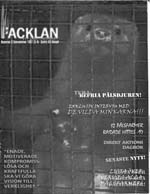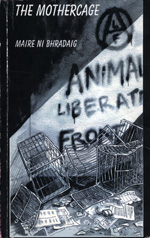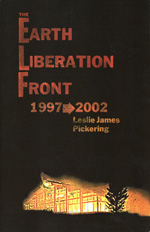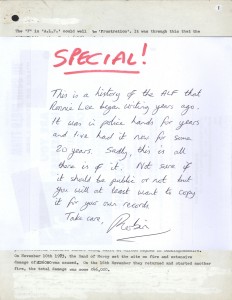Books
The Hunt and the Anti-Hunt
The Hunt and the Anti-Hunt (1982, London, England)
“It is not difficult to understand why animals are treated so indifferently in a society where the powerful minority holds the majority in similar contempt.” Philip Windeatt
Grounded firmly in a traditional British left-socialist critique, The Hunt and the Anti-Hunt is Philip Windeatt’s classic treatise on opposition to bloodsports. Written shortly after the author worked as a researcher on The Animals Film, each page drips with anger at both the act of sport hunting and the economic class that perpetuates it.
Anyone seeking a better understanding of the history of the animal liberation movement would do well to read this short book. Tracing bloodsports back to the domestication of canines for hunting purposes, the book continues by describing the founding of early animal welfare societies and the eventual emergence of the Hunt Saboteurs Association and Animal Liberation Front. Along the way expect a refreshing analysis of the pillaging of public lands, human alienation from wilderness, corporate governance, and many other subjects that were too often missing from the animal lib literature of the 1980s.
Rage and Reason
Rage And Reason (First edition publication date and location unknown. AK Press edition: 1998, San Francisco, CA)
Despite assurances from Ingrid Newkirk and Steven Seagal to the contrary, this book just isn’t all that good. Marketed as an animal rights revenge novel (complete with former Special Forces commandos skinning furriers) Rage and Reason was banned in some countries upon its initial release. The hype over these bans fueled great curiosity among those of us in North America who were having a difficult time obtaining a copy. In 1998 AK Press produced a new edition which immediately landed with a dull thud in the movement. We all bought and read R&R at the same time, and a few days later one could feel the collective disappointment.
I will not ruin the “surprise” for those of you have have yet to read the book, but… well, shit. Let’s just say that if you find yourself enjoying the story, brace yourself for the cop out coming in the final pages. Also: non-vegan protagonists in an animal liberation murder story? Yeah, they’ve got the dedication to risk life sentences for beheading CEO’s of agri-businesses, but they just can’t stop eating yogurt! Pfft!
Earth Liberation Front 97-02
Earth Liberation Front 1997-2002 (2003. Second printing with new dedication and layout 2007. Portland, OR)
Leslie James Pickering grew up in Buffalo, NY. In the mid 90s he became involved in the local hardcore music scene. While attending shows in the surrounding area, he began reading the literature distributed there by local animal rights groups. Zines such as Holocaust (published by Animal Defense League founder Kris Qua) were his introduction to radical politics and support for underground direct action.
Like most kids who grow up in smaller cities, Leslie James left Buffalo as soon as he had the means. After a brief stint skateboarding in San Francisco (during which time he filmed for the underground skate video rarity “Heat Zone”) Pickering landed in Portland, OR. There, he met Craig Rosebraugh, and after a few years the two of them began publishing a newspaper called Resistance with other members of a group called Liberation Collective. At this same time, a group calling themselves the Earth Liberation Front began a series of arson attacks against companies involved in logging and other environmentally harmful practices. They sent their first media statement to Liberation Collective, and the rest of the story is what Pickering documents in Earth Liberation Front 97-02.
Consisting of reprints, interviews, and some original material, Earth Liberation Front 97-02 is a must read for those who wish to understand the beginnings of the Green Scare.
The raw stuff of history: An incomplete, unfinished Ronnie Lee manuscript.
Unfinished Manuscript (Early to mid 1980s, England)
A few months ago we contacted our friend Robin Webb to borrow some of his animal liberation publications for scanning. Robin cheerily agreed to send us a package, and when it arrived it included some of the rarest publications we have yet received. We gingerly pulled one gem after another from the box, and just when we thought we couldn’t be more excited we found this unfinished history of the ALF written by Ronnie Lee.
Drafted almost thirty years ago, this publication spent decades in police custody before ending up in the possession of the ALF Press Office. After its trip through the evidence room the manuscript is missing over a hundred pages, but still bristles with history.
We are still investigating the story behind this document, but felt it would be unfair to our readers to keep it out of circulation any longer. Here, distributed to the public for the first time, is the story of the Animal Liberation Front as told by one its founders.
Green Rage
Green Rage: Radical environmentalism and the unmaking of civilization (1990, Boston, MA.)
One of the first books I bought about radical wilderness defense was Green Rage. It is an excellent investigation of the origins of (western) environmental radicalism, and I recommend that you read it cover to cover.
Speaking of covers, you might notice that this particular copy of Green Rage is a little ragged. The reason for that is because this is my copy, and after reading the book I took it’s message to heart. Several years ago in Oregon, a small group of activists from around the region were protesting at a breeding facility that supplied rabbits to the vivisection industry. When we arrived the farms owners were not present, and neither were any law enforcement. Not coincidentally I quickly found myself living with some critters who liked to chew on everything in our humble home. I hope you will enjoy Green Rage as much as they did!
Facklan
Facklan (1996-1997 Umea, Sweden)
(Editors note: Facklan is a Swedish language publication that we bring to you due to its historical significance. Umea, Sweden produced one of the most remarkable animal liberation communities of the 1990s. Their influence was so strong that politicians in Sweden stated in national media that they feared animal rightists may collapse the countries infrastructure, both through sabotage and the conversion of the nations youth to veganism. Facklan was produced during the infancy of this tiny, but formidable uprising. One of our readers from Sweden has offered the summary that follows.)
Facklan (The Torch) was a Swedish magazine supporting the A.L.F. and
other radical groups fighting for the animals. It was released in four
issues in 1996-1997, during the biggest peak of A.L.F. activity in the
1990:ies in Sweden. The magazine was based in the northern city Umea,
which was well known for it’s number of vegans and animal rights
activists, militant (all fur shops closed in Umea as a result of the
A.L.F.) as well as non militant (almost 50 percent of the students at
some schools were vegetarians). Umea was often referred to as the
“Vegan Mecca”, and was also well known for bands promoting the animal
rights message, such as Refused.
The first issue contained translated interviews etc from mainly UK and
US sources, and also had copied text from the Swedish militant
activist/anarchist manual Lila Svarta. Of course there was also a
diary of actions and addresses to imprisoned animal rights activists.
Two spreads were also dedicated to show mainstream media articles from
the time, also serving as a sign of the impact of the A.L.F. activity.
During the later issues, more of the content was produced by Swedish
authors. In the second issue, there were a lot of more news from
Sweden and Finland, letters to the editor, communiques from the newly
started group The Wild Minks, a report from the riot against the fur
auction in Skara, a piece on the repression of Umea acitivists,
reviews of records under the headline “Activist Core”, and now also a
diary of actions focusing on Sweden. Content from abroad was still
used though, this time information from The Final Nail and on Barry
Horne. On the last page, a summary in English was also published for
the foreign readers.
The third issue contained an exclusive interview with The Wild Minks,
the group that got most feared among the fur farmers, for liberating
minks and setting fire to properties of the fur industry. An address
list to all Swedish fur farms was published together with slogans such
as “What are you waiting for?”. There were critical articles directed
to hardcore posers, as well as articles about how animals that had
been liberated were doing in their new homes.
The fourth and the last issue contained more articles like “How the
Raid was Done” – often raids that the police had said were so
professional it had to have been carried out by professionals from
abroad… One person urges for a Swedish A.L.F. Supporters Group, and
a spokesperson who could defend the actions openly. Til now, this had
only been done my anonymous activists in balaclavas, or by Emelie
E:son, an anonymous A.L.F. activist from the 1980:ies. Focus was also
targeted on groups trying to attack Peter Singer (who was at a visit
in Sweden during this period), there was a big report from the animal
rights campaigning and activity against the vivisection at the Umea
University, as well as more information directly from The Wild Minks.
After the last issue, a Swedish A.L.F. Supporters Group was founded,
doing both work towards the media as towards prisoners and the animal
rights movement in general. They also released their own magazine,
later named Befriaren (The Liberator).




The Mothercage
The Mothercage (2004, Wolverhampton, England)
“Those who carry out direct action in the cause of animal liberation are,
indeed, doing something extraordinary, but they are not super-beings, just
ordinary people who care sufficiently to risk their own liberty in bringing
freedom to other creatures. But ordinary people have their differences,
their frailties, their loves and hates and their fears…”
Ronnie Lee, from the introduction.
Maire ni Bhradaig’s The Mothercage is a fictional portrayal of an Animal Liberation Front raid. Originally published in England, it was never widely available outside of Europe. Although it is written for young adults, the characters are complex enough to hold the interest of older readers. The author’s knowledge of militant AR culture makes the story a realistic representation of how activists might interact, and unlike Rage and Reason and Animal Rites, there are no former green berets running around with machine guns.
The strength of this book is Bhradaig’s willingness to present the people behind the mask as plainly, painfully human. Outside of Paul Chadwick’s Concrete: Think Like A Mountain you will not find a more accurate portrayal of a group of radicals. While some of the book’s cast are wonderful people, others are bigots, adventurists, or cowards hiding their flaws behind a balaclava.
The grassroots animal and wilderness liberation movements indulge in far too much hero worship, a tendency that has led us to embrace some very shady characters over the years- characters who often harm our credibility in the long term. The Mothercage serves as a reminder that the masked figures we so admire are not always so admirable, and more importantly, that improving ourselves increases our effectiveness as activists.
 |
Against All Odds
Against All Odds (1986, London, England.)
Editors note: The TALON Conspiracy endeavors to archive the best, most complete copies available of all publications in our collection. Although Against All Odds had previously been posted on March 14, 2011, we have since found a higher quality copy from the original publisher. Our first posting had been a Canadian reprint with bad generation loss that was also missing several photos printed in the British edition. The Canadian version can still be found here.
Originally published in England as a book 25 years ago, Against All Odds was regularly distributed in North America as a low cost zine. It remains one of the best publications documenting the rise of the Animal Liberation Front and the Animal Liberation Leagues in England.
In many ways, the 1980s was the high water mark of the Animal Liberation movement. In 1984, thousands of people in England participated in direct action against vivisection, staging large scale raids against six labs. Multitudes of people would overwhelm security in broad daylight and remove the oppressed creatures inside, often causing minor damage along the way and taking out valuable footage which was used to grow the movement. Many dozens of arrests followed these raids, but it is arguable that police response was not the cause of death of this mass militant movement taking shape in the UK.
Around this same time we saw the emergence of groups such as the Hunt Retribution Squad and Animal Rights Militia. Rather than rejecting the idea that animal rights activists were fanatics, HRS and ARM embraced that term and seemingly reveled in the negative imagery presented by the media. The Hunt Retribution Squad went so far as to release images of masked activists wielding clubs, chainsaws, and even pavement cutters. The front pages of newspapers widely reported on threats made by HRS to harm hunters if they attacked human opponents of hunting. In the end these counter-assaults never took place, but the damage was done. This type of macho posturing was repellant to many in the movement, and it provided great fodder for the police, courts, and conservative PR teams to use in the war against direct action. Certainly, the few acts of violence taken by the Animal Rights Militia could not outweigh the value of the mass raids and rising public consciousness taking place in England at the time and largely contributed to the recession of a growing struggle for non-human emancipation.
Written in accessible language and unafraid of nuance, its tactical analysis and historical documentation remain valuable to this day. Against All Odds is essential reading for the modern animal liberationist.

A Cat In Hell’s Chance
A Cat In Hell’s Chance (2002, London, England.)
In the annals of animal rights history there are but a handful of legendary campaigns still talked about by activists of all ages. The story of Hill Grove cat farm is one such fabled war, and with good reason. Hill Grove was a watershed moment for the movement and eventually led to the founding of the Stop Huntingdon Animal Cruelty (SHAC) campaign. The battles that raged there included the beating and intentional poisoning of protesters, attacks by company employees, systematic police brutality, a security bill that ran into the millions of British pounds, and eventual victory for the cats being imprisoned in farmer Chris Brown’s compound.
A Cat in Hell’s Chance attempts to document this significant stage in our movement’s development. While the book is in need of a better editor, and is at times disjointed, it does cover all of the major events involved. Including all the way back to the first protests and raids against Hill Grove in the 1980s. Lovers of animal rights history, and young warriors curious about the successful tactics developed by earlier generations, would do well to read this long out of print book.
UPDATE: If you would like a physical copy of this book, it is available through the New Zealand Anti-Vivisection Society and can be found HERE.
DISCLAIMER: animal liberationist is an online archive preserving the history of protest movements for animal rights and environmentalism. Its owners, contributors, and designers are not responsible for actions taken by third parties which may be harmful or unlawful to the individuals or entities named in archived publications. This web site is provided for the purpose of historical research and analysis, and is not intended to incite, encourage, or condone any criminal action on the part of its readers. All opinions expressed in our archives are those of their original authors only.







